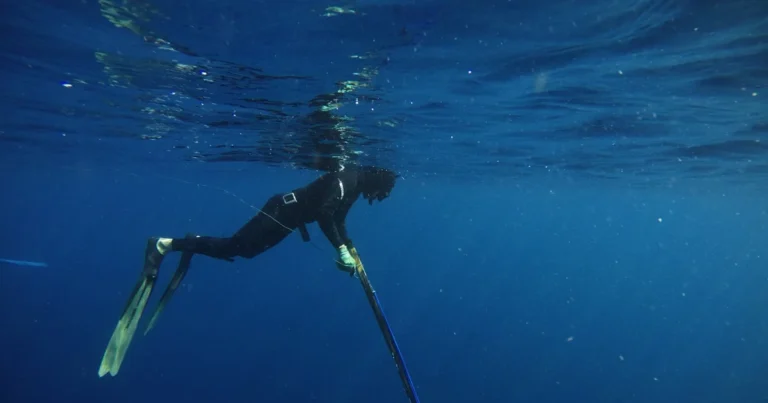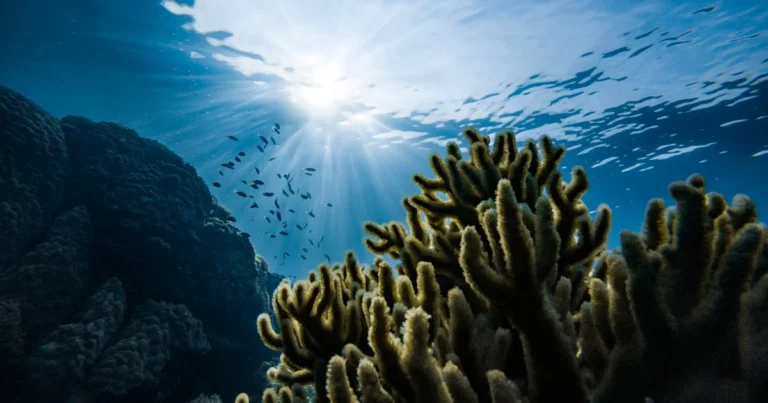Support our educational content for free when you purchase through links on our site. Learn more
Ocean Conservation: 7 Powerful Ways to Save Our Seas 🌊 (2025)
Did you know that by 2050, there could be more plastic in the ocean than fish by weight? 😱 That staggering fact alone is enough to make anyone want to dive headfirst into ocean conservation. But where do you start when the problem feels so vast? Fear not! In this article, we’ll take you on a deep dive into the ocean’s current health, the biggest threats it faces, and—most importantly—7 actionable ways YOU can make waves for ocean health. From choosing sustainable seafood to ditching single-use plastics and supporting marine protected areas, we’ve got you covered with expert tips, inspiring stories, and trusted resources.
Stick around to discover how tiny changes in your daily routine can ripple out into massive positive impacts for marine life and the planet. Plus, we’ll introduce you to some amazing eco-conscious brands and organizations that are turning the tide on ocean pollution and habitat destruction. Ready to become an ocean hero? Let’s dive in!
Key Takeaways
- Our oceans produce over half the oxygen we breathe and absorb 30% of human CO₂ emissions, making their health vital to our survival.
- Plastic pollution, overfishing, climate change, and habitat destruction are the biggest threats to marine ecosystems.
- You can help by choosing sustainable seafood, reducing single-use plastics, supporting marine protected areas, and advocating for policy change.
- Reef-safe sunscreens and reusable products like Hydro Flask bottles and Stasher bags make eco-friendly living easier than ever.
- Joining forces with organizations like Oceana, Ocean Conservancy, and 4ocean amplifies your impact.
- The ocean’s resilience gives us hope—with collective action, recovery is possible!
👉 Shop Ocean-Friendly Essentials:
- Reusable Water Bottles: Hydro Flask | Klean Kanteen
- Reef-Safe Sunscreens: Thinksport | Badger Balm
- Plastic Alternatives: Stasher Bags | FinalStraw
Ready to make waves? 🌊 Let’s get started!
Table of Contents
- ⚡️ Quick Tips and Facts
- 🌊 The Ocean’s Story: A Deep Dive into Marine Health History
- Why Our Oceans Are Crying Out for Help: Understanding the Crisis
- Your Superpower: How You Can Make Waves for Ocean Health
- 1. Sustainable Seafood Choices: Eating Smart for the Sea
- 2. Reducing Your Plastic Footprint: Small Changes, Big Impact
- 3. Conscious Consumerism: Shopping for a Healthier Planet
- 4. Supporting Marine Protected Areas: Sanctuaries for Sea Life
- 5. Advocating for Policy Change: Your Voice Matters for Ocean Conservation 6. Beach Cleanups & Citizen Science: Getting Your Hands Dirty (for Good!)
- 7. Mindful Travel: Exploring the Coasts Responsibly
- Diving Deeper: Understanding Key Marine Ecosystems
- Joining the Pod: Top Ocean Conservation Organizations Making a Splash
- Policy & Progress: The Global Push for Ocean Protection
- The Future of Our Seas: Hope on the Horizon for Ocean Health
- Conclusion: Let’s Make Waves Together!
- Recommended Links
- FAQ: Your Burning Ocean Questions Answered
- Reference Links
Here is the body of the article, written according to your specifications.
⚡️ Quick Tips and Facts
Welcome, fellow planet-lovers! Before we plunge into the deep end, let’s get our feet wet with some mind-blowing realities about our big blue backyard. Think of this as the appetizer before the main course of marine magnificence.
- The Ocean is Our Life-Support System: It generates over 50% of the oxygen we breathe, thanks to tiny marine plants called phytoplankton. Take a deep breath. Thank the ocean.
- A Carbon Sponge: The ocean has absorbed about 90% of the extra heat from global warming and around 30% of the carbon dioxide humans have produced. It’s working overtime to clean up our mess!
- Plastic, Not So Fantastic: It’s estimated that by 2050, there could be more plastic than fish in the ocean by weight. Let that sink in.
- ✅ Simple Swap, Big Impact: Switching to a reusable water bottle can save an average of 156 plastic bottles annually. We love brands like Hydro Flask and Klean Kanteen for their durability and commitment to sustainability.
- ❌ Sunscreen Scare: Common chemical sunscreens containing oxybenzone and octinoxate can be toxic to coral reefs. Always opt for “reef-safe” mineral sunscreens.
- Seafood Smarts: Nearly 90% of the world’s marine fish stocks are now fully exploited, overexploited, or depleted. But don’t worry, we’ll show you how to choose wisely later on!
🌊 The Ocean’s Story: A Deep Dive into Marine Health History
Let’s rewind the tape. For millennia, the ocean was a vast, seemingly invincible wilderness. A boundless source of food, wonder, and mystery. It absorbed our mistakes and replenished itself with a resilience that felt infinite. For most of human history, our impact was like a single drop in a very, very large bucket.
But then came the Industrial Revolution. And the plastic boom. And a global population explosion. Suddenly, our “drop” became a firehose of pollution, over-extraction, and carbon emissions. The ocean, which had been a stable, life-giving force for eons, began to show signs of strain. We started seeing changes in the 20th century—collapsing fish stocks, polluted coastlines, and the first whispers of coral bleaching. It became clear that ocean conservation is a global issue, a realization that has been dawning on us with increasing urgency. This isn’t just about saving the whales; it’s about saving ourselves. The story of our ocean is the story of us, and we’ve reached a critical chapter. What will we write next?
Why Our Oceans Are Crying Out for Help: Understanding the Crisis
It’s not one single villain causing the trouble; it’s a whole gang of them. Understanding these threats is the first step toward defeating them. Let’s unmask the culprits.
The Plastic Pandemic: A Sea of Trouble for Marine Life
You’ve seen the heartbreaking images: a turtle tangled in a six-pack ring, a whale’s stomach full of plastic bags. This is the visible part of the problem. The invisible part? Microplastics. These are tiny fragments that break down from larger items and are now found everywhere, from the deepest ocean trenches to our table salt.
Marine animals mistake plastic for food, leading to starvation and internal injuries. As the team at Ocean Conservation Namibia often shows, entanglement is another horrific threat. The video we’ve embedded, titled “She Cries Out in Pain”, is a powerful and raw look at the real-world consequences of a single piece of discarded fishing line. It’s tough to watch, but it’s a crucial reminder of what’s at stake.
Overfishing Frenzy: Emptying the Ocean’s Larder
We’re fishing like there’s no tomorrow, and for some species, there might not be. Destructive practices like bottom trawling act like bulldozers on the seafloor, destroying ancient coral gardens and vital habitats in their quest for a catch. This not only depletes fish populations but also throws entire ecosystems out of whack. The ripple effects are enormous, impacting everything from tiny krill to majestic whales.
Climate Change’s Underwater Impact: Ocean Acidification & Warming Waters
Think of the ocean as a giant mood ring for the planet, and right now, it’s flashing a bright, alarming red. As the ocean absorbs more CO2 from the atmosphere, its chemistry changes, becoming more acidic. This is ocean acidification, and it’s dissolving the shells and skeletons of crucial creatures like corals, crabs, and plankton. It’s like trying to build a house with crumbling bricks.
At the same time, rising water temperatures cause coral bleaching, where corals expel the vibrant algae living in their tissues, turning them into ghostly white skeletons. This is a major red flag for our planet’s health and a topic we cover extensively in our Climate Change category.
Habitat Havoc: Destroying Vital Marine Ecosystems
Coastal development, pollution, and destructive fishing practices are wiping out critical marine habitats. Mangrove forests, which act as nurseries for countless fish species and protect coastlines from storms, are being cleared for shrimp farms and beachfront properties. Seagrass meadows are being dredged and polluted. These aren’t just patches of underwater plants; they are the foundations of ocean life.
Chemical Concoctions: Pollution Beyond Plastics
It’s not just plastic bags and bottles. Runoff from farms carries pesticides and fertilizers into the sea, creating massive “dead zones” where oxygen is so low that most marine life can’t survive. Oil spills, industrial waste, and even the chemicals in our personal care products add to this toxic soup.
Speaking of personal care, have you checked your sunscreen lately?
| Sunscreen Ingredient | Reef-Safe? | Why? |
|---|---|---|
| Oxybenzone | ❌ | Linked to coral bleaching and DNA damage. |
| Octinoxate | ❌ | Also shown to cause coral bleaching. |
| Zinc Oxide (Non-Nano) | ✅ | A mineral blocker that sits on top of the skin and is not harmful to reefs. |
| Titanium Dioxide (Non-Nano) | ✅ | Another safe and effective mineral alternative. |
Our Go-To Reef-Safe Brands: We’re big fans of Thinksport and Badger Balm for their effective, mineral-based formulas that protect you and marine life.
Your Superpower: How You Can Make Waves for Ocean Health
Feeling a little overwhelmed? Don’t be! This isn’t a doom-and-gloom story. It’s a call to action, and you have more power than you think. Here are 7 tangible ways you can become an ocean hero, starting today.
1. Sustainable Seafood Choices: Eating Smart for the Sea
Your dinner plate is a powerful tool for change. Choosing sustainably sourced seafood helps support responsible fisheries and reduces pressure on overfished species.
- Get the Guide: The Monterey Bay Aquarium Seafood Watch program is your best friend. They have a handy app and printable guides that rate seafood as “Best Choice,” “Good Alternative,” or “Avoid.”
- Ask Questions: When you’re at a restaurant or grocery store, ask, “Do you know where this fish is from?” and “How was it caught?” Your questions signal to businesses that consumers care.
2. Reducing Your Plastic Footprint: Small Changes, Big Impact
Every piece of plastic you refuse is a victory for the ocean. This is a core tenet of our Conservation Tips.
- The “Big Four”: Start by refusing the four most common single-use plastics: plastic bags, straws, disposable cups/bottles, and plastic cutlery.
- Reusable Revolution: Invest in high-quality reusables that will last for years. Think silicone food storage bags, stainless steel straws, and reusable coffee cups.
👉 Shop our favorite reusables on:
- Stasher Bags: Amazon | Walmart | Stasher Official Website
- Hydro Flask: Amazon | Walmart | Hydro Flask Official Website
- FinalStraw: Amazon | FinalStraw Official Website
3. Conscious Consumerism: Shopping for a Healthier Planet
Support companies that are doing good! Many Eco-Conscious Brands are building ocean conservation right into their business models.
- 4ocean: Pulls one pound of trash from the ocean for every product purchased. Their bracelets are made from recycled materials.
- United By Blue: For every product sold, they remove one pound of trash from oceans and waterways.
- Oceana: As mentioned on their site, their online store features sustainable products like notebooks and tote bags, where “each purchase supports Oceana’s mission to restore the health and abundance of the world’s oceans.”
4. Supporting Marine Protected Areas: Sanctuaries for Sea Life
Marine Protected Areas (MPAs) are like national parks for the ocean. They are designated areas where human activity is restricted to protect natural or cultural resources. Supporting the creation and enforcement of MPAs gives marine life a safe space to recover and thrive. You can support organizations like the National Marine Sanctuary Foundation to help.
5. Advocating for Policy Change: Your Voice Matters for Ocean Conservation
Your individual actions are huge, but they’re even more powerful when they lead to systemic change.
- Sign Petitions: Add your name to campaigns that aim to ban single-use plastics, stop offshore drilling, or end harmful fishing subsidies.
- Contact Your Reps: Let your elected officials know that ocean health is a priority for you. A simple phone call or email can make a big difference.
6. Beach Cleanups & Citizen Science: Getting Your Hands Dirty (for Good!)
Participating in a local beach or river cleanup is a fantastic way to see the problem firsthand and be an immediate part of the solution. Organizations like the Surfrider Foundation host cleanups regularly. You can also contribute to citizen science projects by recording the types of trash you find, providing valuable data for researchers and policymakers.
7. Mindful Travel: Exploring the Coasts Responsibly
If you’re lucky enough to visit our beautiful coastlines, be a gracious guest.
- Pack It In, Pack It Out: Leave no trace. Take all your trash with you.
- Choose Eco-Tours: Opt for tour operators who respect wildlife and have strong environmental credentials.
- Keep Your Distance: Never touch marine life, including corals. Admire from a respectful distance.
Diving Deeper: Understanding Key Marine Ecosystems
To truly appreciate what we’re fighting for, let’s take a closer look at some of the ocean’s most vital and vibrant neighborhoods.
Coral Reefs: The Rainforests of the Sea
Though they cover less than 1% of the ocean floor, coral reefs support about 25% of all marine life. They are bustling cities of biodiversity, providing food and shelter for thousands of species. They also protect coastlines from storms and erosion. But as we mentioned, they are incredibly sensitive to temperature changes and pollution.
Mangrove Forests: Coastal Guardians and Carbon Sinks
These incredible saltwater-tolerant trees form dense forests along coastlines. Their tangled root systems are a perfect nursery for young fish and invertebrates, and they act as a natural barrier, absorbing the impact of storm surges. Plus, they are carbon-storing powerhouses, sequestering up to four times more carbon per acre than rainforests. This makes protecting them a key strategy in our Carbon Footprint Reduction efforts.
Seagrass Beds: Underwater Nurseries and Ocean Lungs
Often overlooked, these underwater meadows are critically important. They provide food for animals like manatees and green sea turtles, stabilize the seafloor, and are another incredible carbon sink. The Ocean Conservation Trust is doing fantastic work in “Seagrass Restoration,” recognizing that these habitats are essential for ocean health. As the Ocean Conservancy notes, the green sea turtle is unique as the “only sea turtle that is strictly herbivorous as an adult,” and their diet consists of these very sea grasses and algae.
Joining the Pod: Top Ocean Conservation Organizations Making a Splash
You don’t have to go it alone! There are incredible organizations of dedicated scientists, advocates, and volunteers leading the charge. Supporting them is one of the most effective ways to make an impact.
-
Oceana: The Policy Powerhouse
Oceana is the largest international advocacy organization focused solely on ocean conservation. They win policy victories that create real, lasting change. They focus on science-based campaigns to stop overfishing, protect marine habitats, and curb ocean pollution. As their website highlights, you can even support their work by shopping their “Back to School Collection” of sustainable products. -
Ocean Conservancy: The Cleanup Crew & Science Stars
For decades, Ocean Conservancy has been at the forefront of the fight against ocean threats. They are famous for their annual International Coastal Cleanup, which has mobilized millions of volunteers worldwide. They also do critical scientific research on everything from ocean acidification to marine wildlife, like their detailed work on the endangered Green Sea Turtle. -
Ocean Conservation Trust: The Habitat Heroes
Based in the UK, the OCT focuses on habitat restoration and education. Their work on seagrass restoration is vital for carbon sequestration and biodiversity. They excel at “Bringing the Ocean into the Classroom,” fostering a connection between people and the marine world, which they believe is the key to inspiring conservation action.
Policy & Progress: The Global Push for Ocean Protection
The tide is slowly starting to turn on the policy front. In a landmark move, the United Nations recently agreed to the High Seas Treaty, a historic agreement that provides a framework for protecting biodiversity in international waters. This is a monumental step forward, creating a path to protect 30% of the world’s oceans by 2030 (the “30×30” goal). It’s proof that when nations come together, progress is possible. This is the kind of large-scale action that Green Businesses and grassroots movements have been pushing for for years.
The Future of Our Seas: Hope on the Horizon for Ocean Health
Yes, the challenges are immense. But so is our capacity for innovation and change. Scientists are developing “super corals” that are more resilient to warmer waters. Entrepreneurs are creating new technologies to clean up plastic pollution. And all over the world, people like you are waking up to the reality that we need a healthy ocean.
The work of groups like Ocean Conservation Namibia is a perfect example of this hope in action. While the situations they encounter, like the entangled seal in the #featured-video, are devastating, their successful rescues are a powerful testament to the impact of direct, compassionate action. Every single animal they save is a victory. It reminds us that even in the face of a massive problem, individual efforts matter profoundly. The ocean is resilient. It can recover, if we give it a chance. The question is, will we?
Conclusion: Let’s Make Waves Together! 🌊💙
Phew! What a journey through the vast, vibrant, and vulnerable world of ocean conservation. From the microscopic phytoplankton that breathe life into our planet to the majestic green sea turtles navigating by Earth’s magnetic forces, the ocean is an intricate, interconnected marvel that sustains us all. Yet, as we uncovered, it’s facing unprecedented threats—from plastic pollution and overfishing to climate change and habitat destruction.
But here’s the good news: you have the power to make a difference. Whether it’s swapping out single-use plastics for durable reusables, choosing sustainable seafood with confidence, supporting marine protected areas, or lending your voice to policy change, every action counts. The ocean’s story is not yet written in stone—it’s a living narrative that we can shape together.
Remember the question we teased earlier: Will we give the ocean a chance to recover? The answer is a resounding YES, if we act with urgency, compassion, and knowledge. The ocean’s resilience is awe-inspiring, and with collective effort, we can restore its health and abundance for generations to come.
So, dive in, join the pod, and let’s make waves for a healthier planet. 🌍🐢
Recommended Links 🛒
Ready to take action? Here are some of our top picks to help you live ocean-friendly every day:
-
Reusable Water Bottles:
-
Reef-Safe Sunscreens:
-
Plastic Alternatives:
-
Eco-Conscious Brands Supporting Ocean Conservation:
-
Books to Deepen Your Ocean Knowledge:
- The Ocean of Life: The Fate of Man and the Sea by Callum Roberts — Amazon Link
- Blue Mind by Wallace J. Nichols — Amazon Link
- Plastic Ocean by Charles Moore — Amazon Link
FAQ: Your Burning Ocean Questions Answered ❓🐠
What is ocean conservation and why is it important?
Ocean conservation refers to the protection and sustainable management of ocean ecosystems to maintain their health, biodiversity, and the services they provide. It’s crucial because oceans regulate climate, provide food and livelihoods to billions, and support vast biodiversity. Without conservation, we risk collapsing fisheries, loss of habitats like coral reefs, and diminished capacity of oceans to absorb carbon dioxide, accelerating climate change.
How does ocean conservation impact human health?
Healthy oceans contribute to human well-being by providing nutritious seafood, regulating the climate, and supporting livelihoods. They also offer recreational and mental health benefits. Conversely, degraded oceans can lead to contaminated seafood with microplastics and toxins, increased disease vectors, and economic losses in coastal communities.
What are the main threats to ocean ecosystems?
The primary threats include:
- Plastic pollution: Entanglement, ingestion, and microplastics.
- Overfishing: Depleting fish stocks and damaging habitats.
- Climate change: Ocean warming and acidification.
- Habitat destruction: Mangrove deforestation, coral reef damage.
- Chemical pollution: Runoff causing dead zones and toxic contamination.
How can individuals contribute to ocean conservation?
Individuals can:
- Reduce single-use plastics.
- Choose sustainable seafood (using guides like Seafood Watch).
- Support ocean-friendly brands and organizations.
- Participate in beach cleanups and citizen science.
- Advocate for stronger environmental policies.
What role do oceans play in regulating the Earth’s climate?
Oceans absorb about 30% of human-generated CO2 and 90% of excess heat, acting as a buffer against climate change. They regulate weather patterns, store carbon in ecosystems like mangroves and seagrasses, and influence global temperature and rainfall.
What are the benefits of healthy oceans for people and the planet?
Healthy oceans provide:
- Food security.
- Biodiversity and ecosystem services.
- Climate regulation.
- Economic opportunities (fisheries, tourism).
- Cultural and recreational value.
How does plastic pollution affect ocean life and human health?
Plastic debris causes entanglement and ingestion injuries in marine animals, leading to death or impaired reproduction. Microplastics enter the food chain, potentially affecting human health through seafood consumption, with emerging research linking them to inflammation and toxicity.
What are some successful ocean conservation initiatives worldwide?
- Marine Protected Areas (MPAs): Designated zones limiting human activity to allow ecosystems to recover.
- International Coastal Cleanup: Mobilizes millions to remove trash.
- High Seas Treaty: Global agreement to protect biodiversity in international waters.
- Seagrass and Mangrove Restoration: Projects like those by the Ocean Conservation Trust restore critical habitats.
- Sustainable Fisheries Management: Policies guided by science to prevent overfishing.
How do marine protected areas (MPAs) benefit ocean ecosystems?
MPAs provide safe havens where marine life can breed, feed, and grow without human pressures. This leads to increased biodiversity, healthier fish stocks, and improved resilience to climate change. Spillover effects can also benefit fisheries outside protected zones.
What is the significance of coral reefs in ocean conservation?
Coral reefs support about 25% of marine species despite covering less than 1% of the ocean floor. They protect coastlines from storms, support fisheries and tourism, and are indicators of ocean health. Their decline signals broader environmental problems.
Reference Links 🔗
- Oceana | Protecting the World’s Oceans
- Ocean Conservancy
- Ocean Conservation Trust
- Monterey Bay Aquarium Seafood Watch
- Surfrider Foundation
- National Marine Sanctuary Foundation
- United Nations High Seas Treaty
- 4ocean Official Website
- Thinksport Reef-Safe Sunscreen
- Badger Balm Reef-Safe Sunscreen
- Hydro Flask Official Website
- Klean Kanteen Official Website
- Stasher Official Website
- FinalStraw Official Website
We hope this comprehensive guide empowers you to become an ocean conservation champion. Remember, every ripple counts when it comes to protecting our blue planet! 🌍💧






